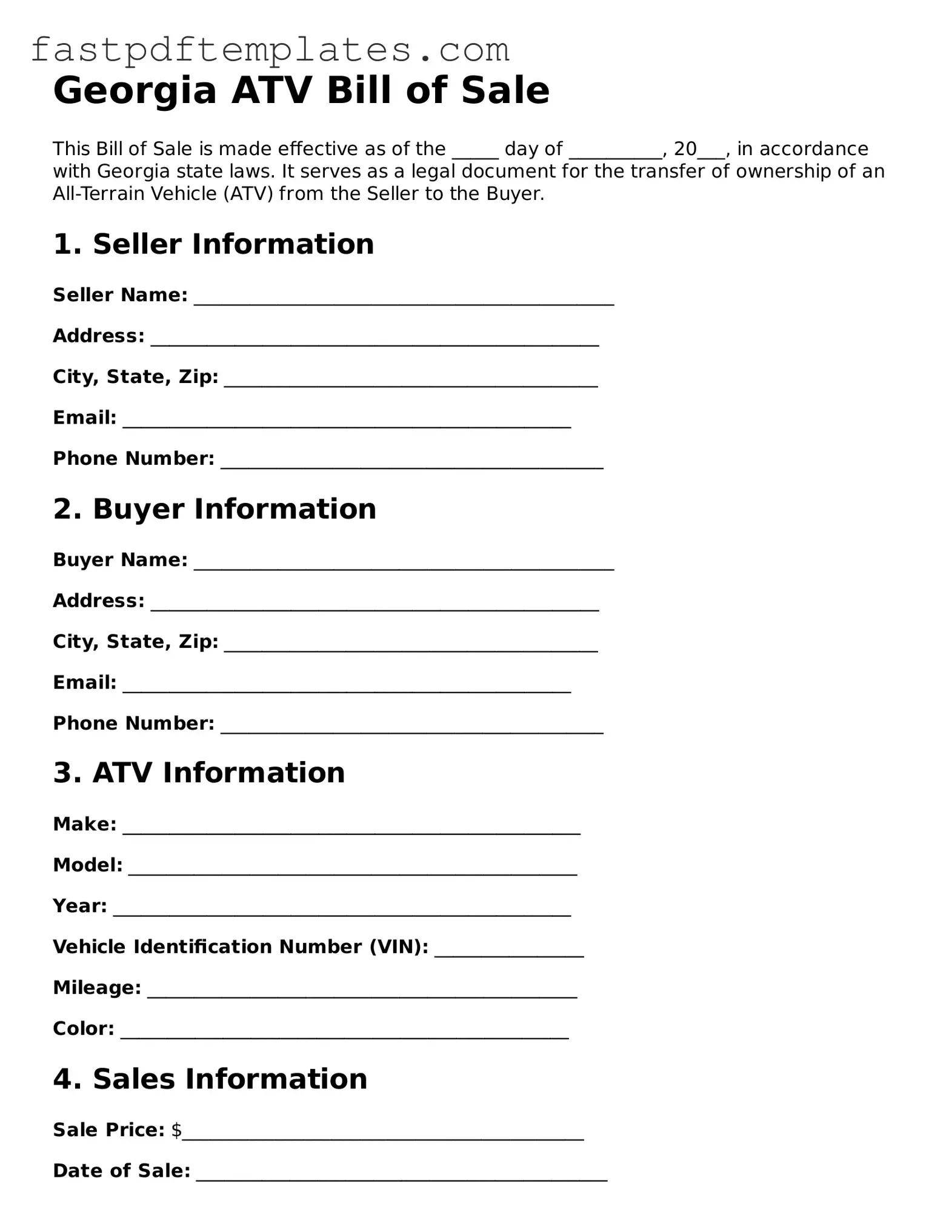Georgia ATV Bill of Sale
This Bill of Sale is made effective as of the _____ day of __________, 20___, in accordance with Georgia state laws. It serves as a legal document for the transfer of ownership of an All-Terrain Vehicle (ATV) from the Seller to the Buyer.
1. Seller Information
Seller Name: _____________________________________________
Address: ________________________________________________
City, State, Zip: ________________________________________
Email: ________________________________________________
Phone Number: _________________________________________
2. Buyer Information
Buyer Name: _____________________________________________
Address: ________________________________________________
City, State, Zip: ________________________________________
Email: ________________________________________________
Phone Number: _________________________________________
3. ATV Information
Make: _________________________________________________
Model: ________________________________________________
Year: _________________________________________________
Vehicle Identification Number (VIN): ________________
Mileage: ______________________________________________
Color: ________________________________________________
4. Sales Information
Sale Price: $___________________________________________
Date of Sale: ____________________________________________
5. Terms and Conditions
The Buyer acknowledges that the ATV is sold “as is” without any warranties or guarantees, either express or implied. The Seller affirms that they are the legal owner of the ATV and have the right to sell it.
6. Signatures
Seller's Signature: ________________________ Date: __________
Buyer's Signature: ________________________ Date: __________
This document should be retained by both parties for their records. It acts as proof of the transaction and can facilitate future ownership verifications.
